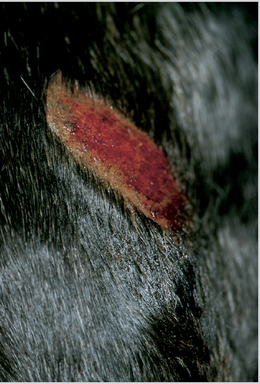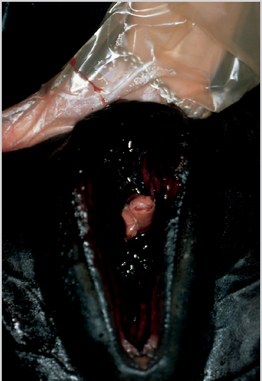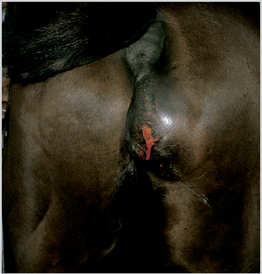2 Although wounds are given specific classifications there are many that have properties of several specific types; indeed there are seldom any classical wounds apart from those afflicted in the course of elective or other surgical procedures. Figure 1 A graze sustained from contact with a concrete floor. The epidermis is stripped but the dermis is not totally disrupted. Healing is usually rapid with negligible scarring. Moist wound management methods hasten recovery and reduce pain significantly. Figure 2 Bruising of the vulva during parturition. There is extensive diffuse bleeding into the tissues without a break in the overlying skin.
Definition of Wounds/Wound Types
Graze/Abrasion/Erosion (Figure 1)

Bruising (Figure 2)

![]()
Stay updated, free articles. Join our Telegram channel

Full access? Get Clinical Tree


 . Graze/Abrasion/Erosion
. Graze/Abrasion/Erosion . Bruising
. Bruising . Hematoma
. Hematoma . Contusion
. Contusion . Puncture Wound
. Puncture Wound . Incised Wound
. Incised Wound . Laceration
. Laceration . Complicated Wound
. Complicated Wound . Burns
. Burns
